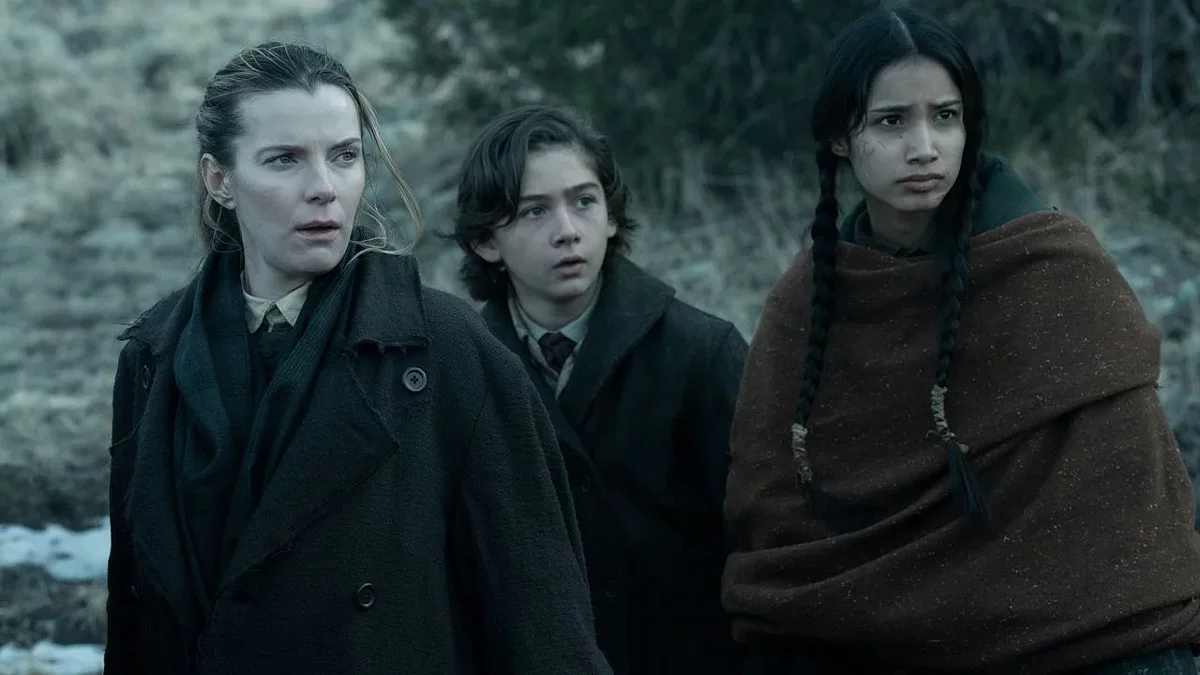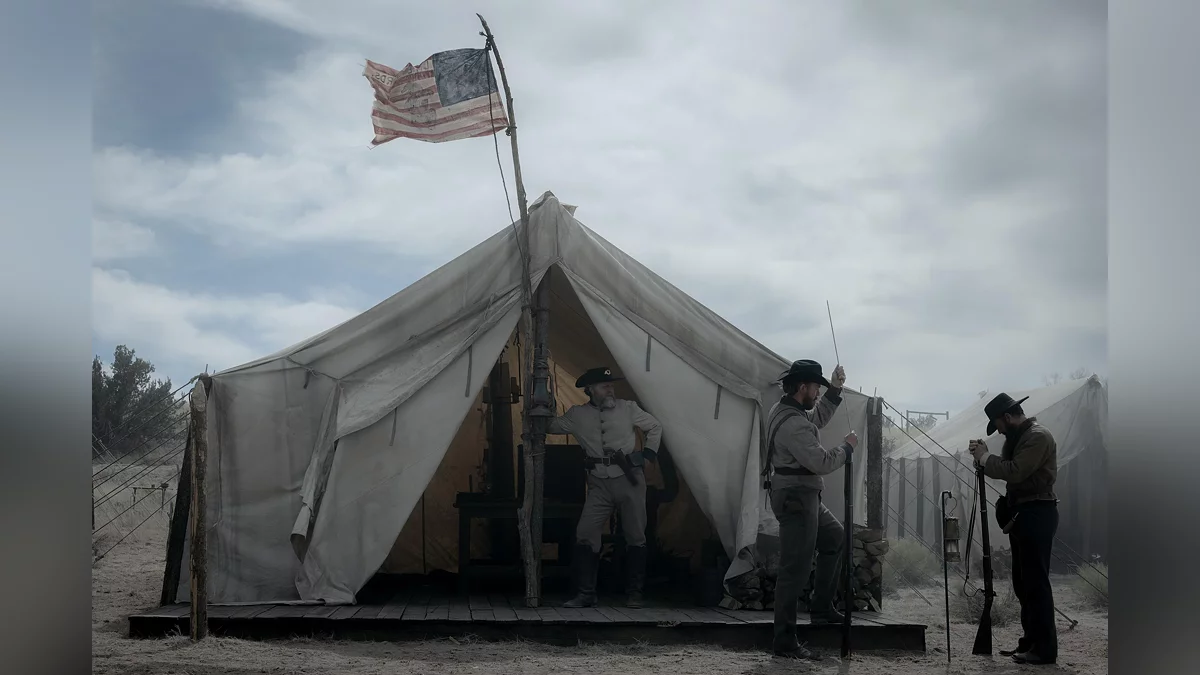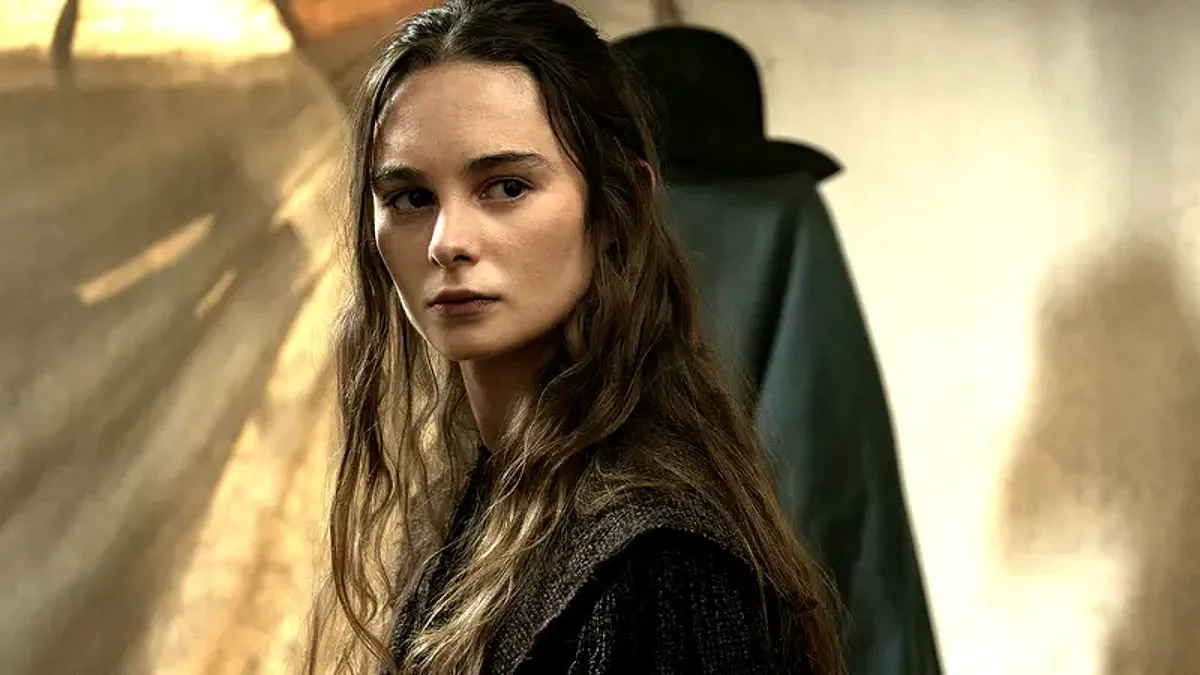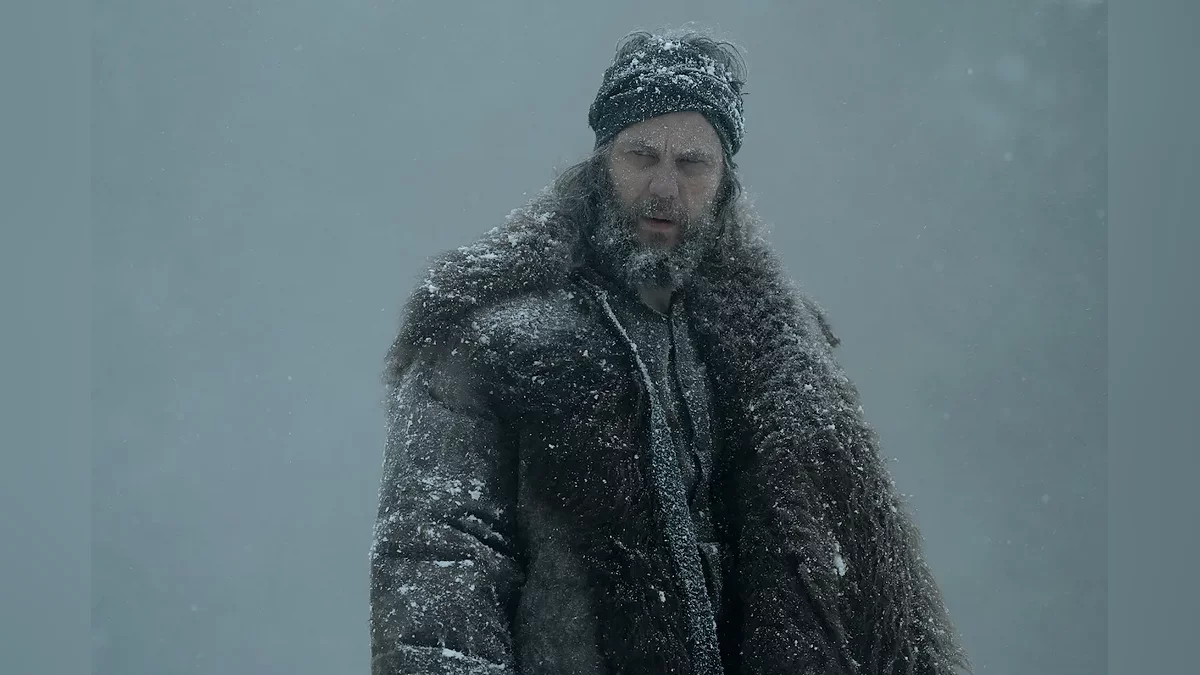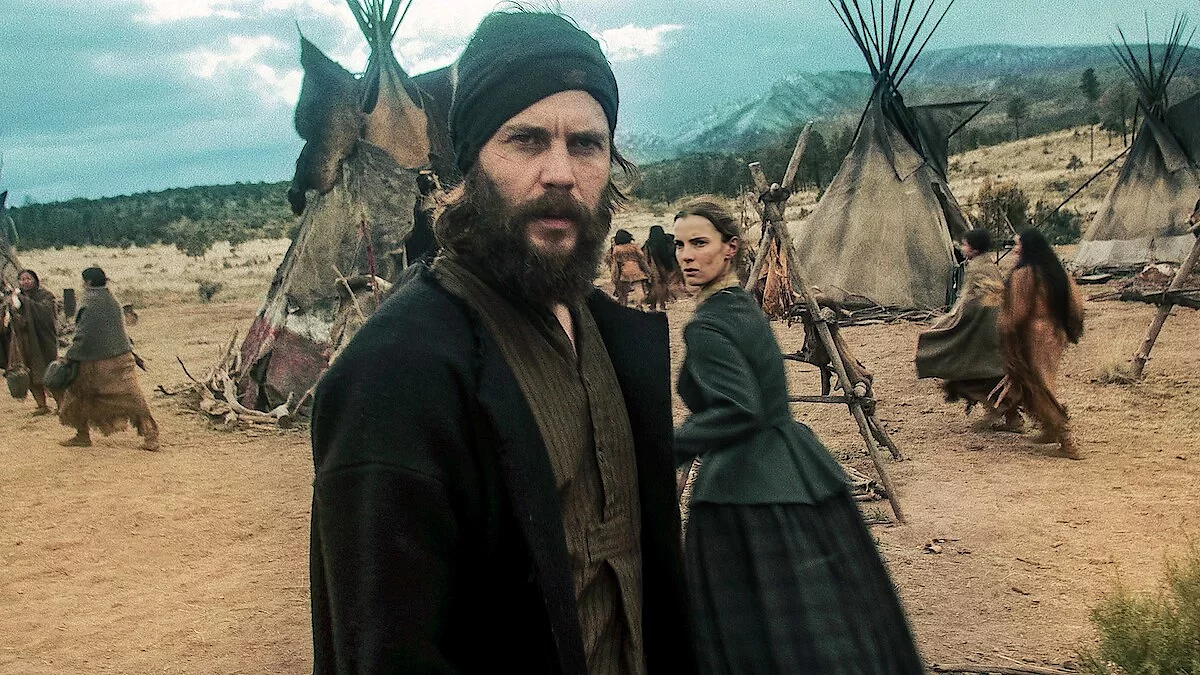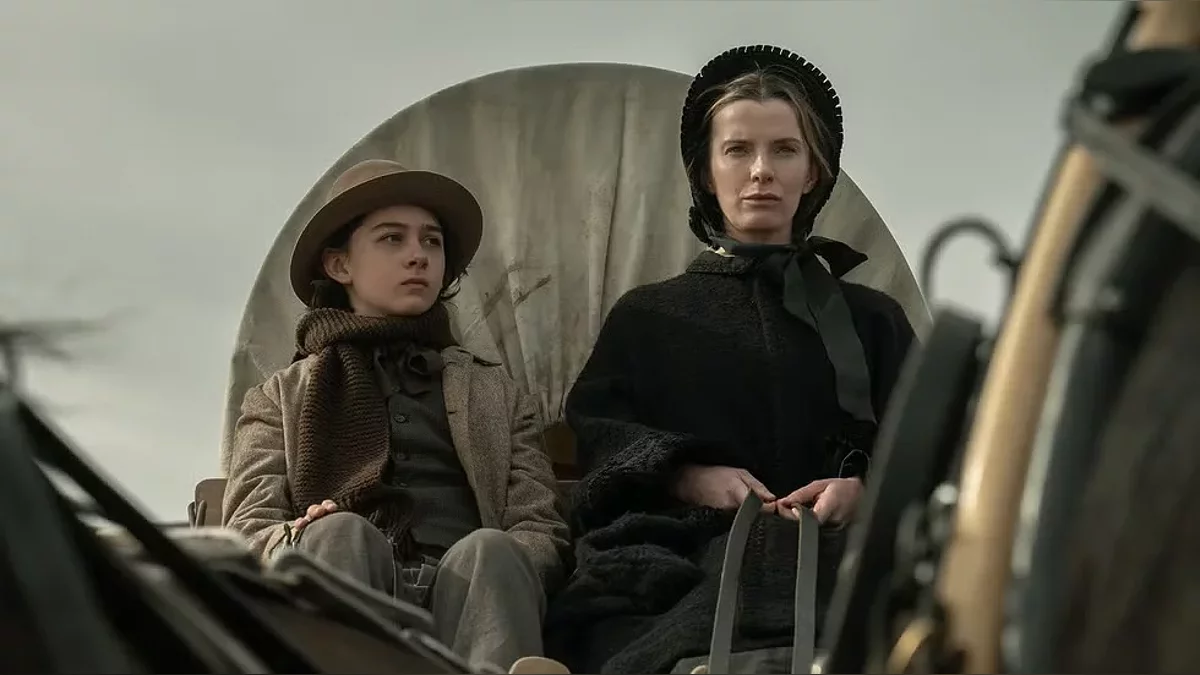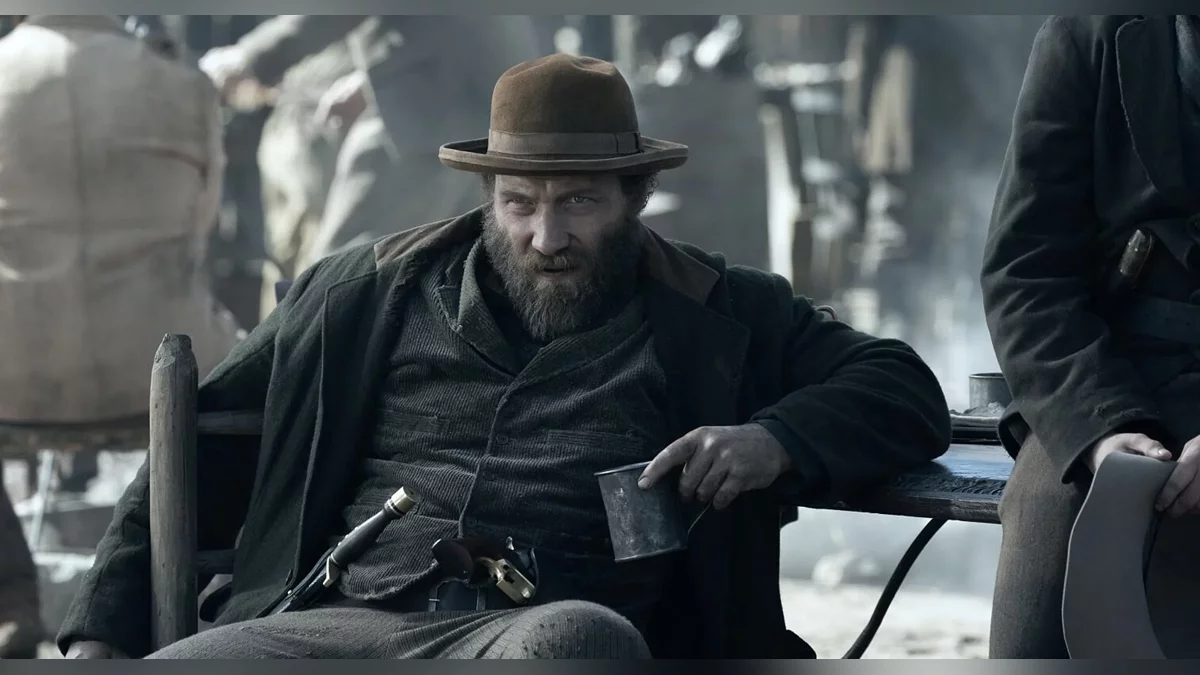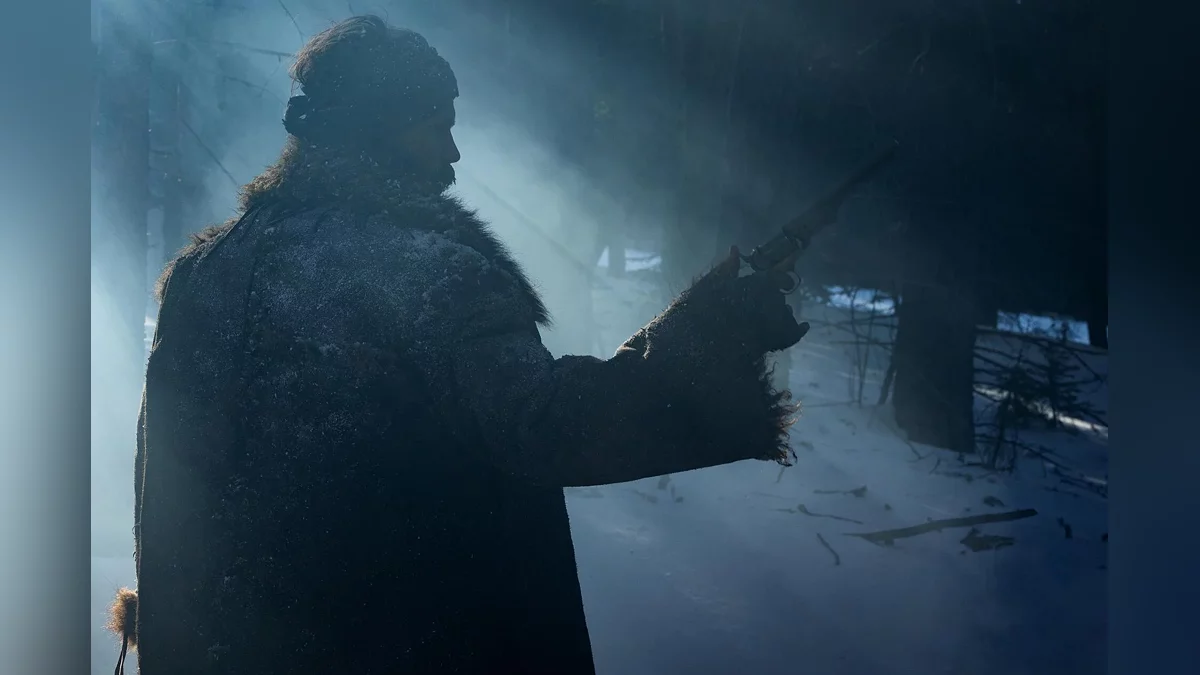American Primeval TV Show Review — «Red Dead Redemption» by Netflix

The New Year holidays are over, and the TV series industry is gaining momentum again. The first notable project is a 6-episode show from Netflix — American Primeval. The new release received a decent rating, so we decided to check it out ourselves. In this review, we will find out whether America is truly as primal as the creators claim, or if it's just another set of clichés in the today unpopular western genre.
- Director: Peter Berg;
- Starring: Taylor Kitsch, Betty Gilpin, Jai Courtney, Dane DeHaan, Saura Lightfoot-Leon, Kim Coates, and Shea Whigham;
- Company: Netflix;
- Release Date: January 9, 2025;
- Number of Episodes: 6;
- IMDb Rating: 8.2;
- Critics Rating on Rotten Tomatoes: 66%;
- Audience Rating on Rotten Tomatoes: 88%.
Plot
In 1857, America was not the safest place. The military brought civilization to the vast expanses of the states through battles, and numerous factions tried to grab their share of power, land, and money. Additionally, conflicts with Native Americans persisted, who by this time no longer had illusions about their new neighbors.
Sarah Rowell, along with her teenage son, tries to reach the West to the child's father. What happened to them is still unknown, but it's immediately noticeable that the woman is in a hurry and running from something. The family arrives at a fort in Utah, where they are supposed to meet a guide, but he has already left the fortress because the protagonists are late, and the upcoming mountain crossing is nearly impossible in winter. Thus, Sarah finds herself in a desperate situation and is forced to join a Mormon caravan, leading to a series of trials and problems.
At first, it seems like a typical road movie, where the characters will spend the entire runtime going somewhere, overcoming everything in their path. But that's not the case. Besides Sarah and her story, the series has two more major story arcs. The first is dedicated to a real historical event — the Mountain Meadows Massacre. It happened in 1857 in Utah. The "Mormon militia" besieged a caravan of non-Mormon settlers for four days, and when they surrendered, they killed almost everyone. In the series, the events are condensed, so the massacre occurs within one day. A young "good Mormon" named Jacob was injured in it, almost scalped, and his wife, Abish, was kidnapped.
The third subplot is the confrontation between the fort's owner and the governor of Utah, who is also the leader of the same Mormons. The preacher is concerned about the government soldiers, so he wants to buy out the fortress and then destroy it, which would logically deprive the military of their stronghold. The fort's owner, a straightforward and generally positive person, is, of course, not thrilled with this idea.
As you may have noticed, the Mormons are one of the main factions in the series. This religious branch preaches the doctrines of the Church of Jesus Christ of Latter-day Saints and is a distinctly American religion. In Utah, it represented the most serious structure with its own army and rules. For other religious denominations, the Mormons were and remain mere sectarians, but in the 19th century, they had plenty of followers. By the way, Mormons still exist today and have their own church in Utah.
As is often the case with a religious movement, behind the lofty words about goodness and forgiveness stood very simple worldly goals and objectives. Governor Young is portrayed in the series as an unequivocally negative character. He seeks more power and control, but in a way that he cannot be specifically accused of anything. Meanwhile, the Mormons themselves in the show are almost entirely evil. They are the source of most of the protagonists' problems and are willing to kill even their own if it pleases the governor-preacher. All of this seems naive, but we will discuss it later.
As a result, already in the first episode, several stories with different characters are formed. The central one, where Sarah, her son, a runaway Native American woman, and a sullen guide named Isaac try to cross the mountains and escape from bounty hunters. The second is Jacob, who is undergoing a test of his faith and searching for his wife Abish. The woman herself, after the caravan massacre, ends up with Native Americans and somehow miraculously avoids death. Finally, there's the preacher-governor and the fort's owner, who take a long time to reach an agreement.
All of this sounds quite engaging, but it actually harbors a huge problem with American Primeval. The main plot centers around Sarah. And you know what happens if you cut out the other characters, arcs, and events? The answer is — almost nothing changes. Here, unexpectedly, you want to recall Game of Thrones — a show that is ambiguous in many ways, yet exemplary in how multiple characters and plots eventually intertwine and affect each other.
This is precisely what American Primeval lacks. Watching the confrontation between the governor and the elderly cowboy is much more boring than watching Isaac save Sarah from bandits. And as for Jacob's storyline, it's not even worth mentioning. It's a complete nightmare. There are no points of intersection between the three stories at all. Perhaps Netflix should have reduced the runtime and released a film specifically about Sarah. That would have made everything much better. If the creators intended to provide a slice of the era, then the task is also accomplished only moderately. For true historical accuracy, the project lacks details and immersion in the topic. It's like you're playing a cowboy game, but not in Red Dead Redemption 2, but in something much cheaper and less developed.
However, the plot as a whole has significant problems. The series is full of simplifications and underdeveloped characters. Moreover, as mentioned above, the unequivocally bad butcher-Mormons seem odd. Turning an important force of that time into uncompromising villains is quite a risky move for Netflix, which generally tries not to offend anyone unnecessarily.
Magical rescues are also present. When all the captive women are killed except for Abish for some reason, it makes you want to facepalm. It's been a while since we've seen such glaring plot armor. The everyday life and culture of the Native Americans are almost not explored, as are any important details. Everything is painted with broad strokes.
Periodically, when certain events occur, you start to question — "why?" This is especially felt in the finale, where each of the three resolutions leaves only bewilderment. Personally, while watching, we ultimately didn't understand the moral and idea behind the two side arcs. The notion that war is bad could have been depicted more interestingly, and the fort's finale feels completely out of place. Moreover, there weren't any particularly "emotionally engaging" feelings for the characters. So why didn't the show fail? It's all about the actors.
Actors
Let's agree right away that no matter how strange and underdeveloped the series itself may be, it has plenty of positive moments. The first and most important is the actors. They all elevate the overall dreariness to a quite watchable level and give the cardboard characters at least some memorable traits. There are quite a few well-known names, but unfortunately, they are not in the first, or even second, tier of Hollywood stars.
Taylor Kitsch is incredibly good as the sullen Isaac, and he's been unlucky with roles for quite some time. The guide doesn't reveal himself immediately, but when Kitsch finally gets material to act on, he gives it his all.
The same can be said for Betty Gilpin. You may know her from the series Mrs. Davis. Her portrayal of Sarah is exactly what it should be. She's a lady, but circumstances force her to become a fighter. The actress successfully combines femininity and emotionality with a tough, steely character. You start to believe in the character.
Jai Courtney is another well-known actor who hasn't been seen in major projects lately. In American Primeval, he plays a bounty hunter. Unfortunately, the character turned out to be a hollow and evil villain — that's his entire characterization. But even here, Courtney pulls through with his charisma. It's simply pleasant to watch him.
Finally, Dane DeHaan portrayed Jacob. Despite the entire crumpled and illogical nature of his story, DeHaan performed very well. The anguish of a man whose world collapsed in an instant is evident in every glance and movement. Jacob's wife was played by the young Spaniard Saura Lightfoot-Leon. Abish undergoes a long journey from a Mormon wife to essentially an Indian, and within the script's framework, Saura manages. The actress can't be blamed for the strange plot twists, so we will likely see more of her in the future.
Special mention should be made of the veterans of the profession — Kim Coates and Shea Whigham. Both have an impressive list of works behind them, making it all the more interesting that these two played the preacher and the fort owner, respectively. Coates has a very expressive face, making him the perfect villain for almost any project, while Whigham naturally portrays a man who practically built an entire fortress with his own hands. The characters are still poorly developed and lack depth beyond a single adjective, but watching two capital-A actors interact in a single frame is a rare pleasure.
There's not much to say about the other characters and actors — they are functions. All the Native Americans simply exist and fulfill their roles. Among them are three characters who have some involvement in the plot. The first is the elderly tribe leader. Naturally, she is wise, reserved, and understanding. The second is her son, who actively promotes the idea of war with the pale faces. And finally, the third is a Native American girl. It's most unfortunate for her because at the beginning, we see her saving herself from rape and then hiding in Sarah's wagon, and that's it. The character's enormous potential is wasted, as she is also mute, so she's only needed in a couple of scenes where she helps Sarah or her son. And yet, she is one of the main characters. It's needless to say how much better she could have been portrayed, but we have what we have.
Visuals
Another important advantage of the series is the filming and setting. Most of the shots are taken in nature rather than in studios, which instantly adds to the immersion. There is just one nuance that was unsettling — the frequent camera shaking with and without reason. In the scene where the characters are riding an old wagon on a rocky road, not only do they shake, but so do the viewers' eyes. It's unpleasant to watch, and it's not very clear why it was done at all. Probably for greater realism.
The setting itself is a big plus for the series. Costumes, coats, hats, small details, weapons — everything is done right. The creators even remembered that Native Americans often rode horses without saddles. The pistols, as they should be, are massive. They convey a sense of weight and threat. Moreover, the characters count their bullets, which regularly run out.
From a visual and atmospheric standpoint, American Primeval is an unequivocal success. It's clear that no expense was spared. This is understandable, as one of the main creators and also the screenwriter is Mark L. Smith, who contributed to The Revenant. He definitely knows how to vividly depict dirt, bloody wounds, animal butchery, and other delights of the Wild West.
***
If you're looking for a series for a couple of evenings, American Primeval is quite capable of captivating you. However, moderately. Don't expect revelations or a timeless project about the "real Wild West." It's just a well-shot show with many problems and clichés in the story. If you're not ready to overlook such things, it will be hard to enjoy it. However, beautiful westerns are hard to find these days, so the project is worth a chance. Plus, there aren't many episodes.

